Magnetic growing rods reduce the need for multiple surgeries a year to treat child’s scoliosis.
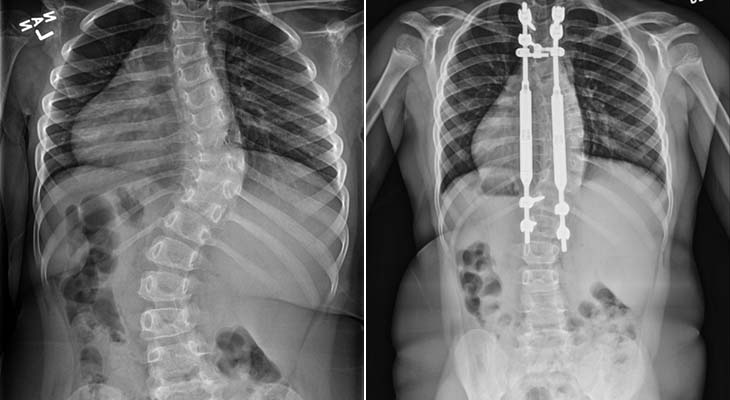
The patient
A female age 5 years and 11 months presented for evaluation of spinal deformity and back pain in September 2020 from a pediatrician referral. X-rays showed a 53-degree scoliosis curve in the thoracic spine and 42 degrees in the lumbar spine. An MRI was ordered to look for any other spino-neural axis abnormalities. She was placed in a brace, but the curve progressed to 58 degrees in the thoracic spine.
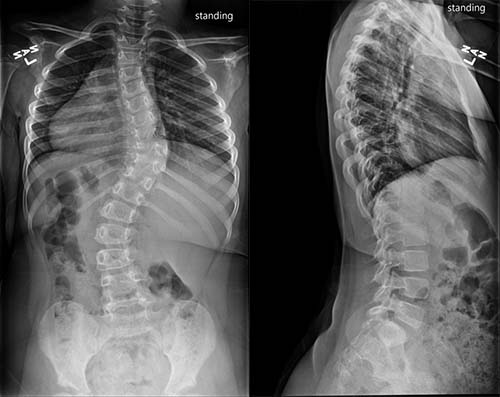
September 2020
The challenge
Historically, physicians would insert traditional growing rods, which would require a trip back to surgery under anesthesia every six months.
Traditional growing rods would require more than a dozen surgeries in total, as the patient would have new rods placed every six months for the next six to eight years. Once she was skeletally mature, she’d be ready for spinal fusion.
Due to the patient’s young age, we did not want to proceed to a posterior spinal fusion yet, as it would make her torso very small for the rest of her life.
The physicians
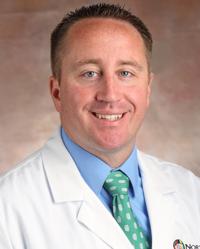 Kent L. Walker, D.O., pediatric orthopedic surgeon, Norton Children’s Orthopedics of Louisville, affiliated with the UofL School of Medicine.
Kent L. Walker, D.O., pediatric orthopedic surgeon, Norton Children’s Orthopedics of Louisville, affiliated with the UofL School of Medicine. Joshua W. Meier, M.D., pediatric orthopedic surgeon, Norton Children’s Orthopedics of Louisville.
Joshua W. Meier, M.D., pediatric orthopedic surgeon, Norton Children’s Orthopedics of Louisville.The solution
Use of the ApiFix procedure. Magnetic rods were incrementally lengthened with the patient’s growth in the clinic, reducing the need for surgery.
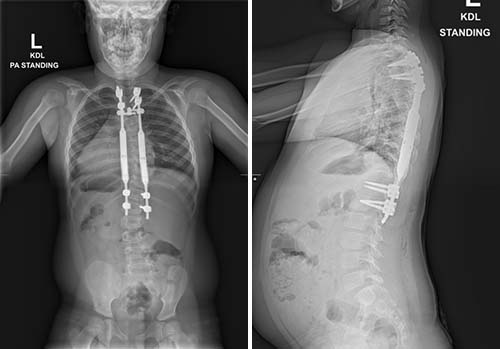
July 2021
The July 2021 surgery to implant magnetic growing rods went well. We placed her in a brace for three months. At the three-month mark we did the first lengthening in the office. She underwent a second lengthening at the six-month mark. We will continue to lengthen until this rod reaches its full extension. At that time, we will take her back to surgery to place a new rod.
The hope is that the magnetic rods will only require surgery every two to three years over the next six to eight years, when the patient will be old enough to have a final posterior fusion.
The result
The patient was able to leave the hospital just two days after surgery. She has not required a trip back to the operating room. If we would have used traditional growing rods she would have already been back to the operating room once and planning to go back every six months afterwards until she finished growing.
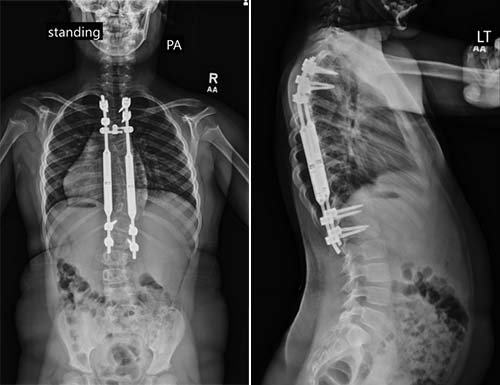
October 2021
The procedure
Drs. Walker and Meier are the only pediatric orthopedic surgeons in Kentucky to be trained and approved to use the ApiFix procedure. This procedure is less invasive, reduces anatomical impact, and provides more mobility than fusions. Learn more from Norton Children’s Orthopedics of Louisville, (502) 394-5678.
CENTERED BOX
Refer a patient
To refer a patient to Norton Children’s Orthopedics of Louisville, visit Norton EpicLink and choose EpicLink referral to Pediatric Orthopedic Surgery.

